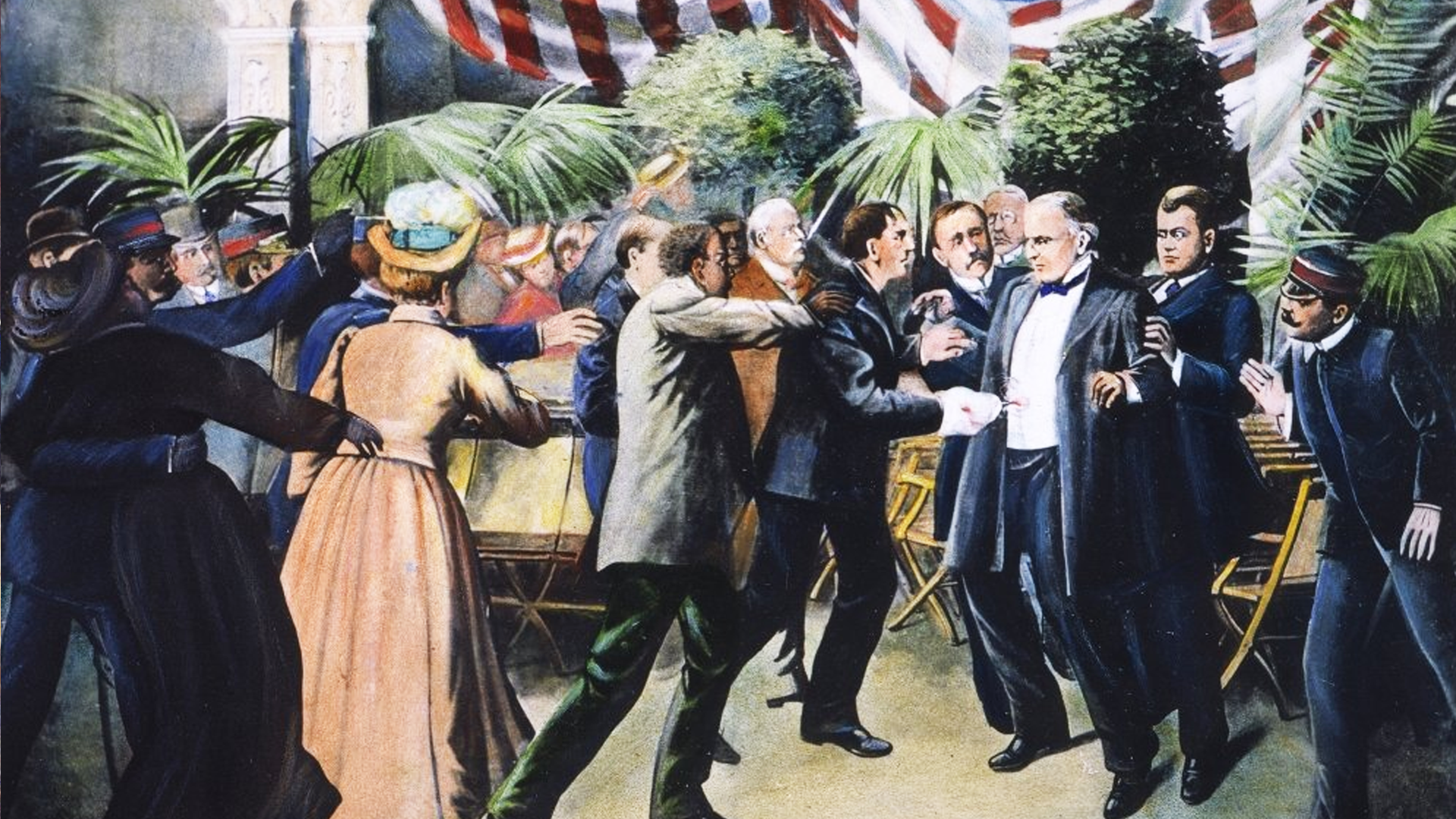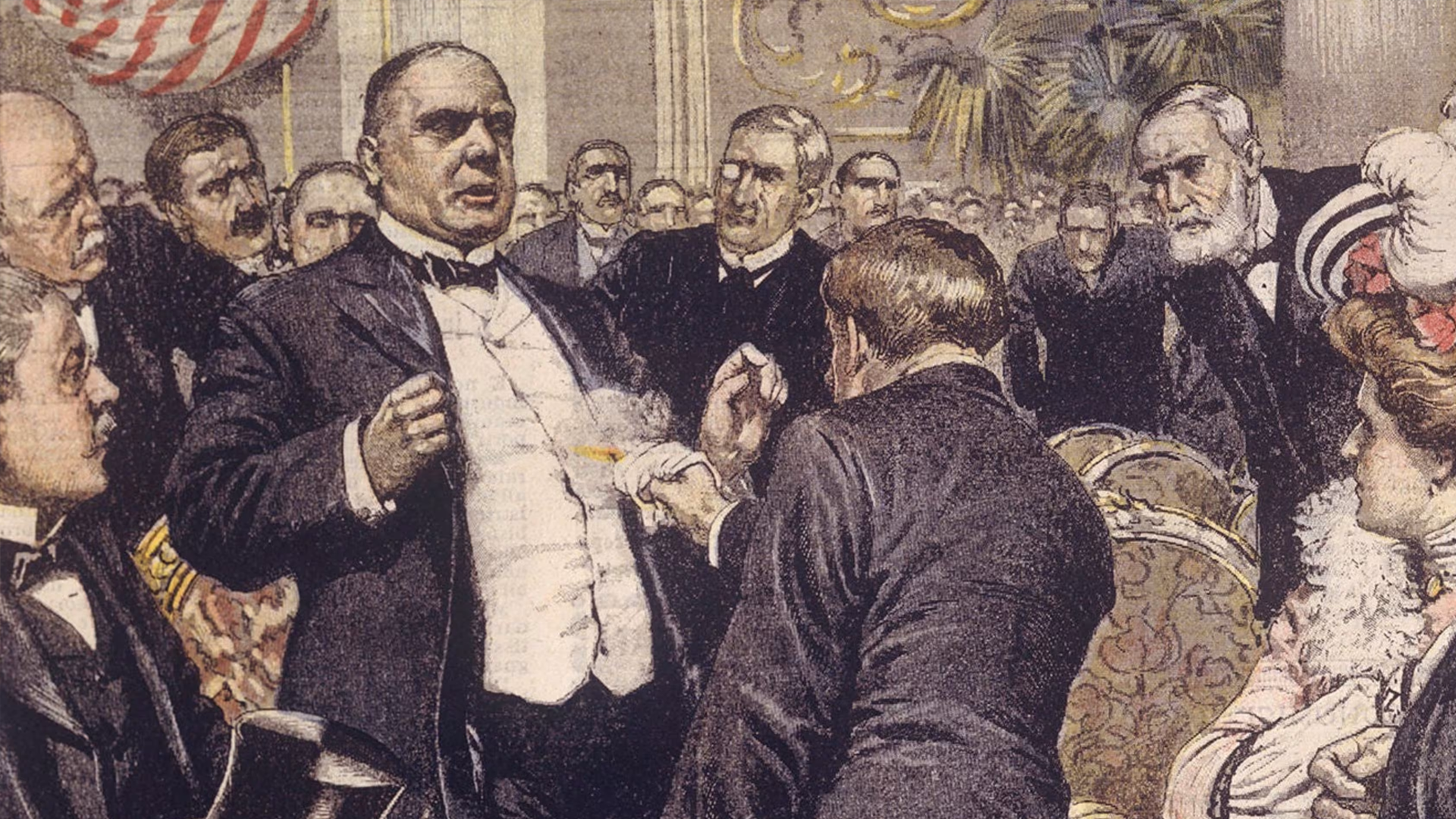The Assassination of President William McKinley

Illustration of President William McKinley being shot at the Pan-American Exposition in Buffalo, New York.
What Happened?
On September 6, 1901, President William McKinley greeted citizens at the Pan-American Exposition in Buffalo, New York. Among the crowd was Leon Czolgosz, a disillusioned anarchist who believed the president embodied corruption and oppression. Concealing a pistol beneath a handkerchief, Czolgosz fired two shots into McKinley’s chest at close range.
McKinley, still conscious, urged his aides to take care in how they told his wife. He was rushed to surgery, where doctors found one bullet lodged in his abdomen. Though his condition briefly improved, undetected gangrene spread through his body, and he died on September 14.
Czolgosz, a 28-year-old factory worker radicalized by anarchist writings and the economic despair of the 1890s, claimed he killed McKinley in the name of the working class. Convicted in a swift trial, he was executed by electric chair on October 29, 1901, declaring himself unrepentant.
The assassination shocked the nation. McKinley became the third U.S. president killed in less than 40 years, following Lincoln and Garfield. Americans increasingly saw the presidency as a vulnerable target in a turbulent industrial age.
The tragedy reshaped presidential security. While the Secret Service had informally guarded presidents since the 1890s, McKinley’s death prompted Congress to assign them the permanent role of protecting the president and, later, presidential candidates.
The succession of Vice President Theodore Roosevelt brought a surge of youthful energy to the White House. Roosevelt’s assertive nationalism and reformist spirit would define the Progressive Era, even as McKinley’s assassination remained a grim reminder of America’s political volatility at the turn of the century.
Why It Matters
McKinley’s assassination was more than an act of violence, it was a mirror of an anxious America. Industrial unrest, widening inequality, and radical politics shaped the moment, but the lasting consequence was institutional: the creation of a permanent system to protect the presidency. It also ushered Theodore Roosevelt into power, accelerating the Progressive Era and reshaping the modern American state. In mourning McKinley, the nation also began to confront how fragile both leadership and democracy could be.
?
How did economic upheaval in the 1890s shape Leon Czolgosz’s radicalization?
Why did anarchism gain momentum among some workers during this period?
What failures in presidential security were exposed by McKinley’s assassination?
How did Theodore Roosevelt’s presidency differ from McKinley’s more cautious leadership?
What role has the Secret Service played in protecting democracy since 1901?
Dig Deeper
A newsreel-style account of McKinley’s shooting, decline, and death following Leon Czolgosz’s attack in Buffalo.
How McKinley’s death reshaped presidential security, leading to the permanent assignment of the Secret Service.
Related

The Progressive Era: Reform, Regulation, and the Limits of Change
From breaking up monopolies to marching for women’s votes, the Progressive Era sought to fix America’s problems — but often left some voices out of the conversation.

The Bill of Rights: What Is It—and What Does It Actually Do?
The Bill of Rights wasn’t added to the Constitution because everything was going great, it was added because the people didn’t trust the government. And they had every reason not to.

The Enlightenment: Revolution of the Mind
The Enlightenment wasn’t just an era of smart people in powdered wigs—it was a radical shift in how humans understood power, truth, and their place in the world. Its ideas fueled revolutions, rewrote constitutions, and laid the intellectual bricks of modern democracy.
Further Reading
Stay curious!
